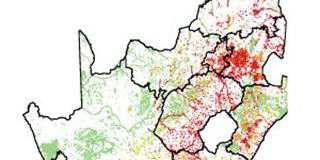
Panel experts:
Coillard Hamusimbi, an independent consultant in food, agriculture and rural development in Zambia [CH].
Cheyo Mwenechanya, head of agribusiness at FNB Zambia [CM].
Jaco Oosthuizen, CEO of the RSA Group [JO].
What potential does the African market hold?
CH: Africa is currently spending US$35 billion [about R500 billion] a year on food imports. Zambia alone imports 54% of its onions, 53% of its apples, and 23% of its citrus. [On average], food accounts for two-thirds of African budgets, with fruit and vegetable consumption rising quickly in urban centres due to rapid urbanisation.
READ Prepare to sell much more fruit and veg online
This is a great opportunity. Medium-income and wealthier households in Zambia alone have increased their fruit and vegetable spending by 11% and 5% respectively.
The overall figures will increase due to rising healthy eating [trends] among higher per capita income households. Even low-income households in Zambia have doubled their expenditure on fresh fruit and vegetables, from 14% to 32%.
CM: There’s a growing middle class in Africa. Growth in smartphone usage took years in the West but in Africa it’s much more rapid. Some 13 million out of 16 million Zambians own a phone, of which four million are smartphones.
This has created a growing demand for all types of products [and] a change in eating patterns. Because of smartphones, Africans are seeing what is happening in the global village, and are spending money because what they see, they want.
Consumer tastes and behaviour are changing and there’s a growing trend towards eating and living healthily. People are moving away from traditional food towards fresh, healthy food.
What is hindering South Africa’s expansion into African markets?
CM: The lack of infrastructure is still challenging. Operational costs are high but there are opportunities to implement techniques across Africa that have been successful elsewhere, such as in South Africa, as industries are still mostly underdeveloped. Access and affordability of credit are still uncompetitive in Africa.
CH: The fresh produce sector is growing but is hampered by structural challenges. We have unregulated, non-transparent and uncompetitive open-air markets, where exploitation is high. The supply of fresh fruit and vegetables is inconsistent, which results in high price volatility. Africa has huge post-harvest losses due to limited cold chain facilities and chaotic marketing systems. Our markets also struggle with unhygienic trading conditions, creating food safety concerns.
JO: The barriers to entry for South Africans into the rest of Africa are mostly trade-related. The borders are closed to South African produce when our production season coincides with those of Botswana and Zimbabwe, and to a lesser extent Zambia.
It’s an issue we need to solve with bilateral trade agreements, but there doesn’t seem to be much political will to do so.
READ Prepare for the supermarket of the future
Africa is lagging behind with free trade negotiations; we don’t see the same level of attention here compared with [the effort spent] on opening markets in China. I think the reason for this is the more challenging trading environment in Africa.
Furthermore, the whole process of allowing produce to cross borders in Africa is complicated by levies, which hinders market development. If levies were handled at a central market when the produce arrived and not at the border, it would simplify things.
The opportunity in Africa is huge, but currently the easiest way is to buy produce at a South African market, take it across the border privately and sell it at an informal market there. We’ve moved much produce into Africa this way, but doing so on a formal level is complicated.
The best approach for trading in Africa is to work closely with government, [avoid being] arrogant, and focus on creating opportunities for the locals. We must grow and partner with Africans to lift the whole industry.
What opportunities are available in Africa?
CM: There are many opportunities for locally produced produce as the ‘buy local’ movement increases. Africa also has an abundance of land available at a low price, above-average growth in the market, natural resources, and good rainfall.
The underdeveloped primary and secondary agriculture sector is a big opportunity, as are the gaps in the value chain. Also, the sizeable youth population means there’s a growing market.
READ New fruit-sorting technology helps curb food waste
In 1980, urbanisation in Africa was 20% a year; today it is 40%. Due to urbanisation, land in cities is running out and farms are being turned into residential properties. There are fewer farms, but this means there’s an opportunity to import food. Retailers are growing, driving a culture where people are no longer growing their own food.
JO: The real opportunity is in setting up markets where local traders can develop. Farmers don’t go out of business due to low prices, but because of low income. Central markets create an opportunity for people to sell all of their produce, every day.
We are in discussions with Zambia to help set up a market that will change the local production base and create a footprint for the rest of Africa. Once we have a few markets developing in Zambia, we’ll see them spread to the rest of Africa.
The local production base will also grow exponentially as the markets develop.
Competition on the markets results in farmers improving their standards of production and packaging to compete for the best price. This is a natural progression that we’ve seen happen in South Africa when producers compete with each other to sell the same produce.
They start to package and brand better and naturally develop their business and adjust their marketing strategy. This spirit of competition is the best way to solve food insecurity in Africa.
Email Coillard Hamusimbi at [email protected], Cheyo Mwenechanya at [email protected], or Jaco Oosthuizen at [email protected].










